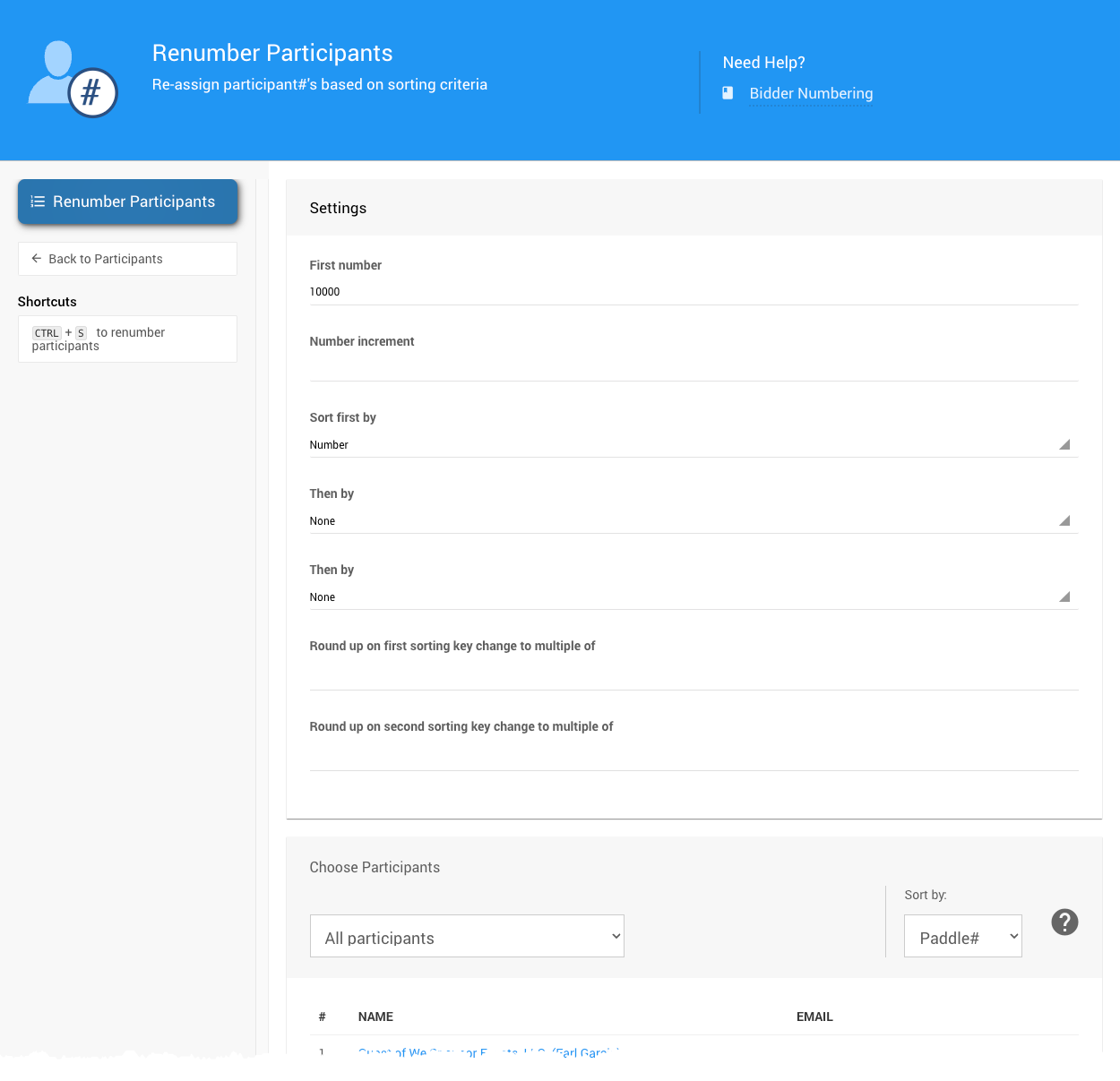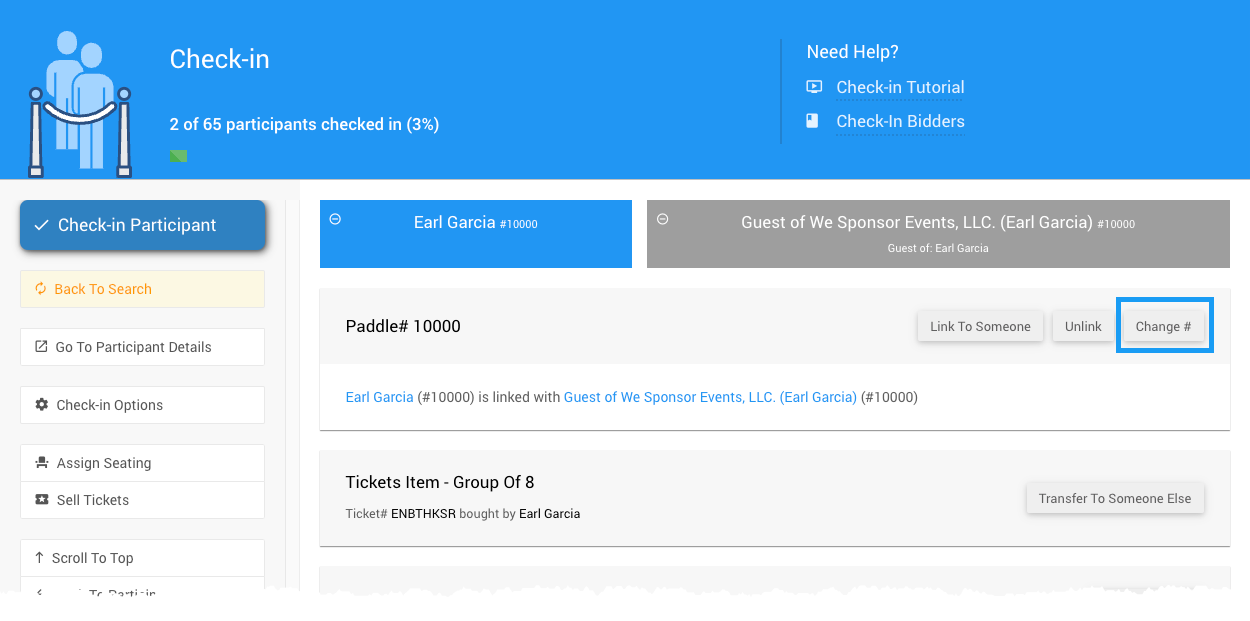How To Turn Off Participant Numbers
Auctria requires participants to have a Paddle# if you link or merge participants. However, sometimes you want to assign a Paddle number at check-in in the order participants arrive so you can hand out paddles in a specific order.
To accommodate this in the system, you can assign participants starting at a high number (e.g., 10,000) before the event begins and then re-assign Paddle#s during check-in. This approach also lets you quickly see which participants have checked in.
PARTICIPANTS NUMBER
The Participant Number is an optional identifier in Auctria and can be ignored in many cases. However, it is required for some operations, such as in-person auction bidding and linking or merging participants.
NOTE: The Participant Number, also known as the Paddle# (Paddle Number), is a term used interchangeably in Auctria. It's especially relevant when an event involves an auction and bidder numbers are necessary.
If you already have participants in the system, the first step is to renumber them to be higher. Click on Participants Numbering and enter 10000 as the first number, and select Number under Sort first by then click on Renumber Participants

All examples taken from a demonstration event.Then click on Event in the main sidebar menu and adjust the Next assigned Paddle# setting to 10000 (it doesn't matter if this is taken—the system will search for a blank spot when assigning the next participant number above the value you enter).
Now, as you add participants or register online, they will get a "high" number.

An example from a demonstration event.During check-in, use the page under Participants Check-in to update participant information (including Paddle#), register credit cards, and add new participants.
You can change the Paddle# by clicking on Change # under Participants >> Check-In >> Next to the participant you want to edit.

An example from a demonstration event.This will open the Change Paddle# window, where you can make the necessary changes to the participant's Paddle number.

An example from a demonstration event.
Last reviewed: May 2024




